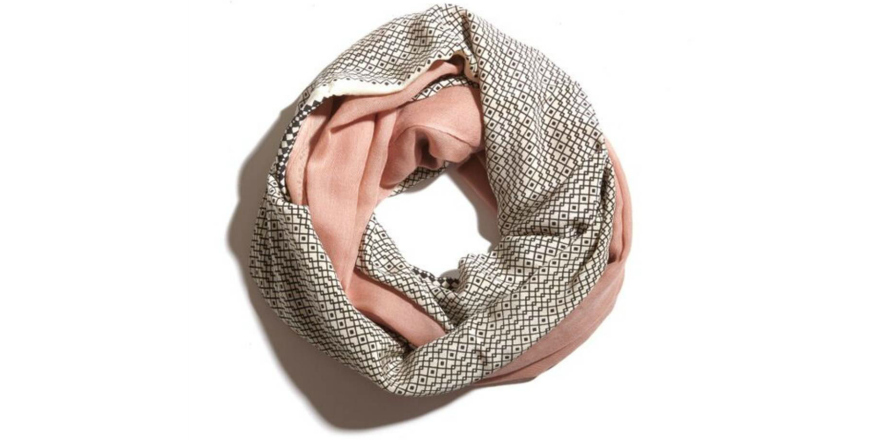Remember that T-shirt you bought on sale for $6.99 a month ago in 3 different colors? Yeah, neither do I because you already threw it out after one wear. You justified throwing it out because ‘What else is there to expect from a cheap T-shirt’ and you gave it an, ‘oh well, it was only $6.99.’
Therein lies the problem with fast fashion. Not only are trends constantly changing (thus creating a pressure to keep up with them), but advancing technology increasingly shortens the time from concept to store, reducing the quality along the way.

Purchase slow fashion Rose Najda Silk and Wool Scarf here.
Sustainable design consultant Kate Fletcher coined the term ‘slow fashion’ in 2007. By her definition, slow fashion is ‘fashion conceived of or from a different starting point to growth, consumerist fashion.’ Slow fashion has been emerging over the last two decades, however, more recently it’s grabbed the attention of many designers and other industry leaders.
To name a few, H&M produced a ‘Conscious Collection’last spring. Levi Strauss denim released a collection made from recycled water bottles in 2013. And New York based Brooklyn Industries manufactures and sells clothes made of 100 percent organic or recycled and repurposed materials. Furthermore, they make many of their items within or near Brooklyn, cutting down on outsourcing and reducing the company’s carbon footprint.
More recently, Zady, an e-commerce retailer for conscious consumers, began selling everything from garments to accessories to housewares. They are setting The New Standard by 'building a company that proves there is a better way [to make clothes].'
With average price points upward of $100 for many of these companies, it’s understandable why consumers may be hesitant to embrace the slow fashion movement. But if you were to calculate your expenses racked up over one year purchasing from fast fashion retailers, you would find you’re actually spending more money on cheap quality.
When you buy sustainable garments, you’re investing in an article of clothing that is made to last. You’re investing in a better future. So be smart before you make your next purchase. Evaluate if you see the item being a staple in at least three different outfits over three years. If you can’t do that, consider that the answer to whether you’re being a conscious consumer.
Gabriella Bower is a student at New York University. Her two passions have always been fashion and philanthropy and she works to incorporate both aspects into her life as often as she can. Read more of Gabriella’s work ranging from current trends to short essays and social justice oriented posts on her blog Read Between the Hemlines.
Comments (0)